A solid cube of side 2a and mass M, sliding on a smooth surface with velocity v0 , collides inelastically with the raised edge of the table:
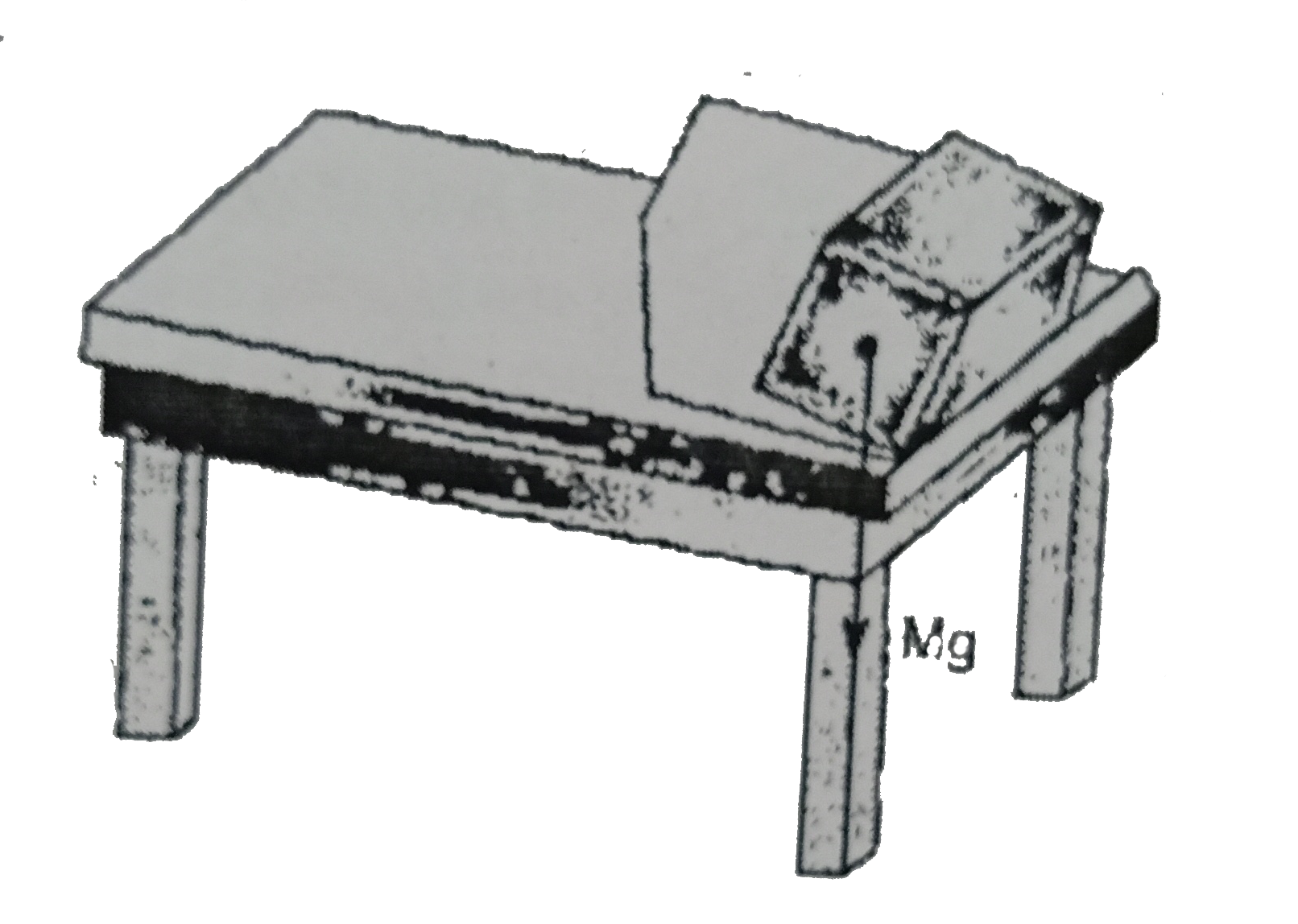
Moment of inertia of cube about edge is 4Ma23
Moment of inertia of cube about edge is 8Ma23
Minimum value of v so that cube falls off the table is √1.19g
Energy of system is conserved
The correct Answer is:B, C
Topper's Solved these Questions
- BOOK - ANURAG MISHRACHAPTER - RIGID BODY MOTIONEXERCISE - COMPREHENSION_TYPE29videos
RIGID BODY MOTION
- BOOK - ANURAG MISHRACHAPTER - RIGID BODY MOTIONEXERCISE - MATCH THE COLUMN12videos
RIGID BODY MOTION
- BOOK - ANURAG MISHRACHAPTER - RIGID BODY MOTIONEXERCISE - SCQ_TYPE83videos
RIGID BODY MOTION
- BOOK - ANURAG MISHRACHAPTER - IMPULSE AND MOMENTUMEXERCISE - matching3videos
IMPULSE AND MOMENTUM
- BOOK - ANURAG MISHRACHAPTER - UNIT AND DIMENSIONSEXERCISE - Matching Type Problem4videos
UNIT AND DIMENSIONS
Similar Questions
A ring of mass m sliding on a smooth surface with velocity v0 enters rough surface with coefficient of kinetic friction μk, then
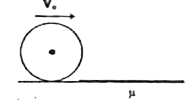 View Solution
View Solution
A circular ring of mass m and radius R rests flat on a horizontal smooth surface as shown in figure. A particle of mass m, and moving with a velocity v. Collides inelastically (e=0) with the ring the angular velocity with which the system rotates after the particle strikes the ring isView Solution
Knowledge Check
- Question 1 - Select One
A solid cylinder of mass m rolls on a rough surface with velocity v0. It collides elastically with a cubical block of same mass at rest. The centre of mass of both the bodies are at same height. Coefficient of friction between horizontal surface and cylinder as well as horizontal surface and cube is μ. No frictional exists between cylinder and cube. The cylinder collides the, cube at t=0, then.
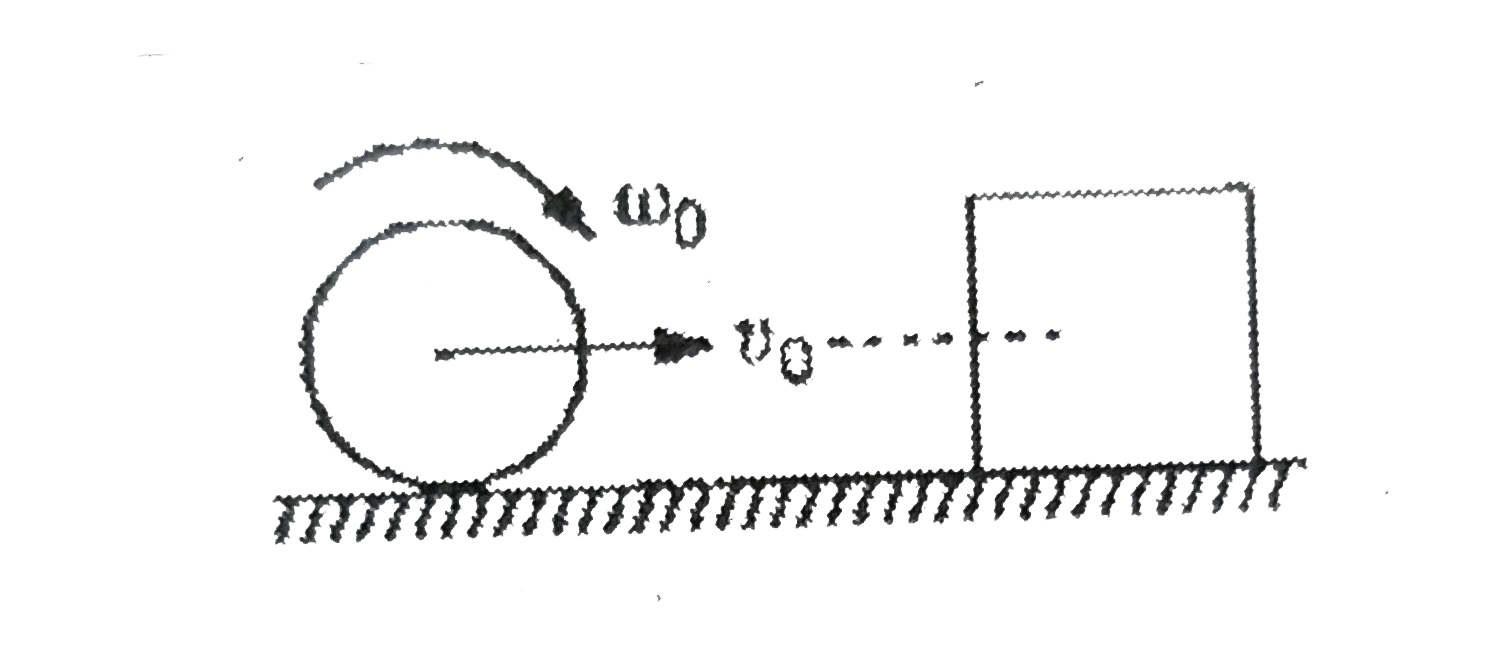
Velocity of cylinder with which it will collide with cube again is:Av0Bv03C2v03Dv04 - Question 2 - Select One
A solid cylinder of mass m rolls on a rough surface with velocity v0. It collides elastically with a cubical block of same mass at rest. The centre of mass of both the bodies are at same height. Coefficient of friction between horizontal surface and cylinder as well as horizontal surface and cube is μ. No frictional exists between cylinder and cube. The cylinder collides the, cube at t=0, then.

Maximum separation between cylinder before it collide the cube again is:Av0(2)μgBv204μgCv204μgDzero - Question 3 - Select One
A solid cylinder of mass m rolls on a rough surface with velocity v0. It collides elastically with a cubical block of same mass at rest. The centre of mass of both the bodies are at same height. Coefficient of friction between horizontal surface and cylinder as well as horizontal surface and cube is μ. No frictional exists between cylinder and cube. The cylinder collides the, cube at t=0, then.
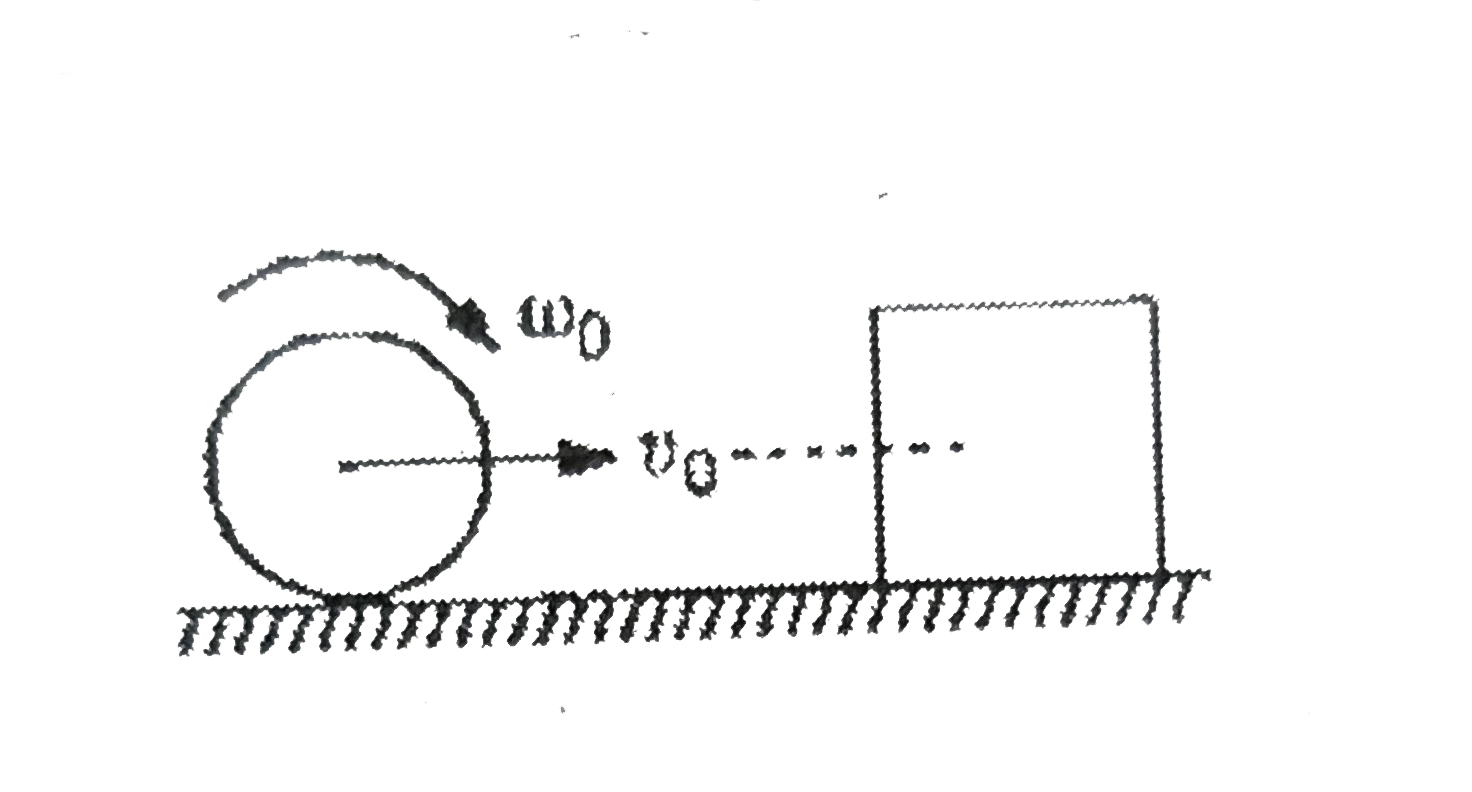
Velocity of cube when the cylinder starts pure rolling:Av02Bv03C2v03Dv04
A solid cylinder of mass m rolls on a rough surface with velocity v0. It collides elastically with a cubical block of same mass at rest. The centre of mass of both the bodies are at same height. Coefficient of friction between horizontal surface and cylinder as well as horizontal surface and cube is μ. No frictional exists between cylinder and cube. The cylinder collides the, cube at t=0, then.
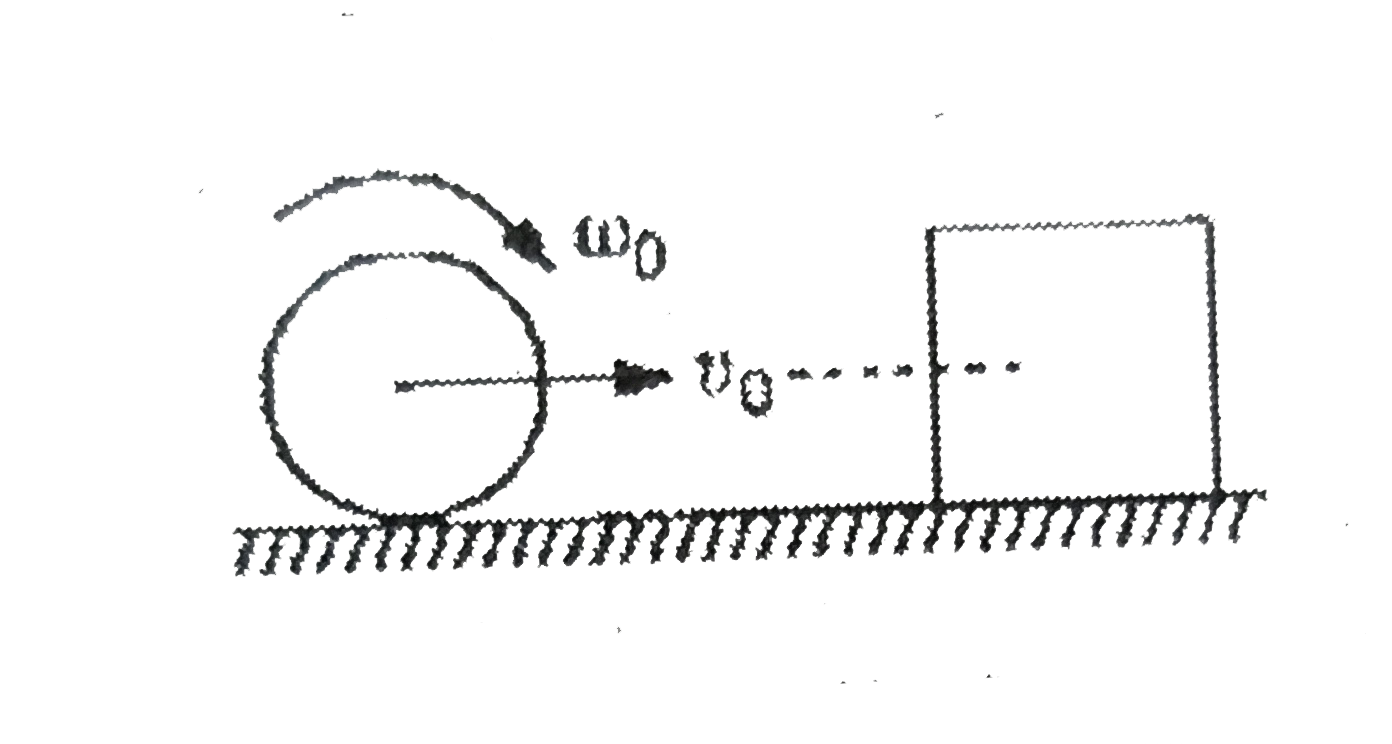
Percentage of energy of cylinder lost due to collision is:View SolutionA solid cylinder of mass m rolls on a rough surface with velocity v0. It collides elastically with a cubical block of same mass at rest. The centre of mass of both the bodies are at same height. Coefficient of friction between horizontal surface and cylinder as well as horizontal surface and cube is μ. No frictional exists between cylinder and cube. The cylinder collides the, cube at t=0, then.
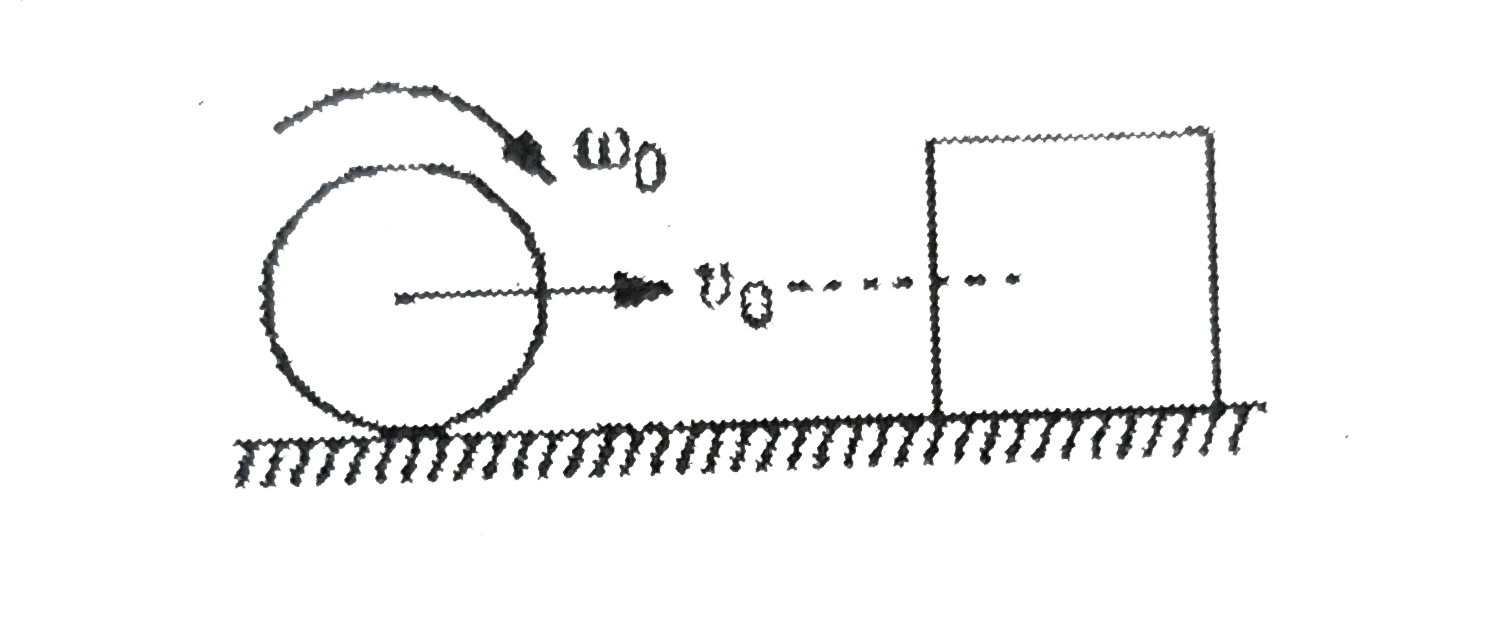
Time after which the cylinder starts pure rolling again:View SolutionA solid cylinder of mass m rolls on a rough surface with velocity v0. It collides elastically with a cubical block of same mass at rest. The centre of mass of both the bodies are at same height. Coefficient of friction between horizontal surface and cylinder as well as horizontal surface and cube is μ. No frictional exists between cylinder and cube. The cylinder collides the, cube at t=0, then.
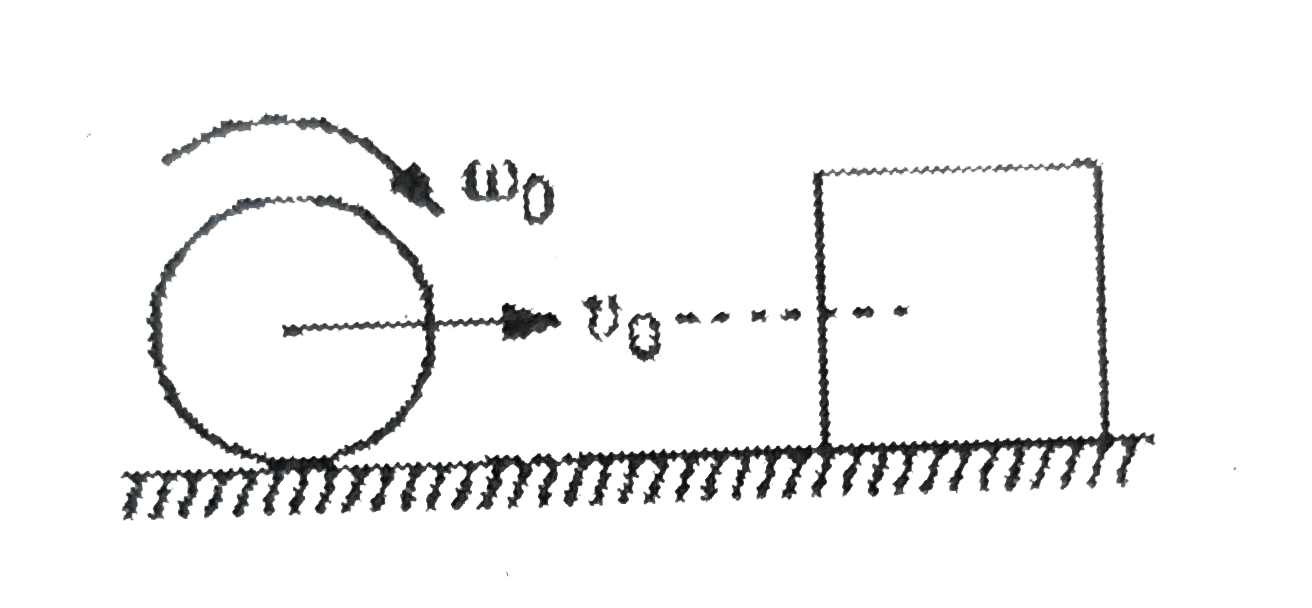
Regarding frictional force acting on cylinder we can say that:View SolutionA ring of mass m sliding on a smooth surface with velocity v0 enters rough surface with coefficient of kinetic friction μk, then
 View Solution
View Solution
A circular ring of mass m and radius R rests flat on a horizontal smooth surface as shown in figure. A particle of mass m, and moving with a velocity v. Collides inelastically (e=0) with the ring the angular velocity with which the system rotates after the particle strikes the ring isView Solution

